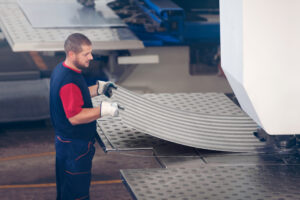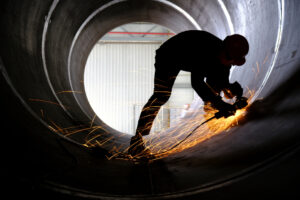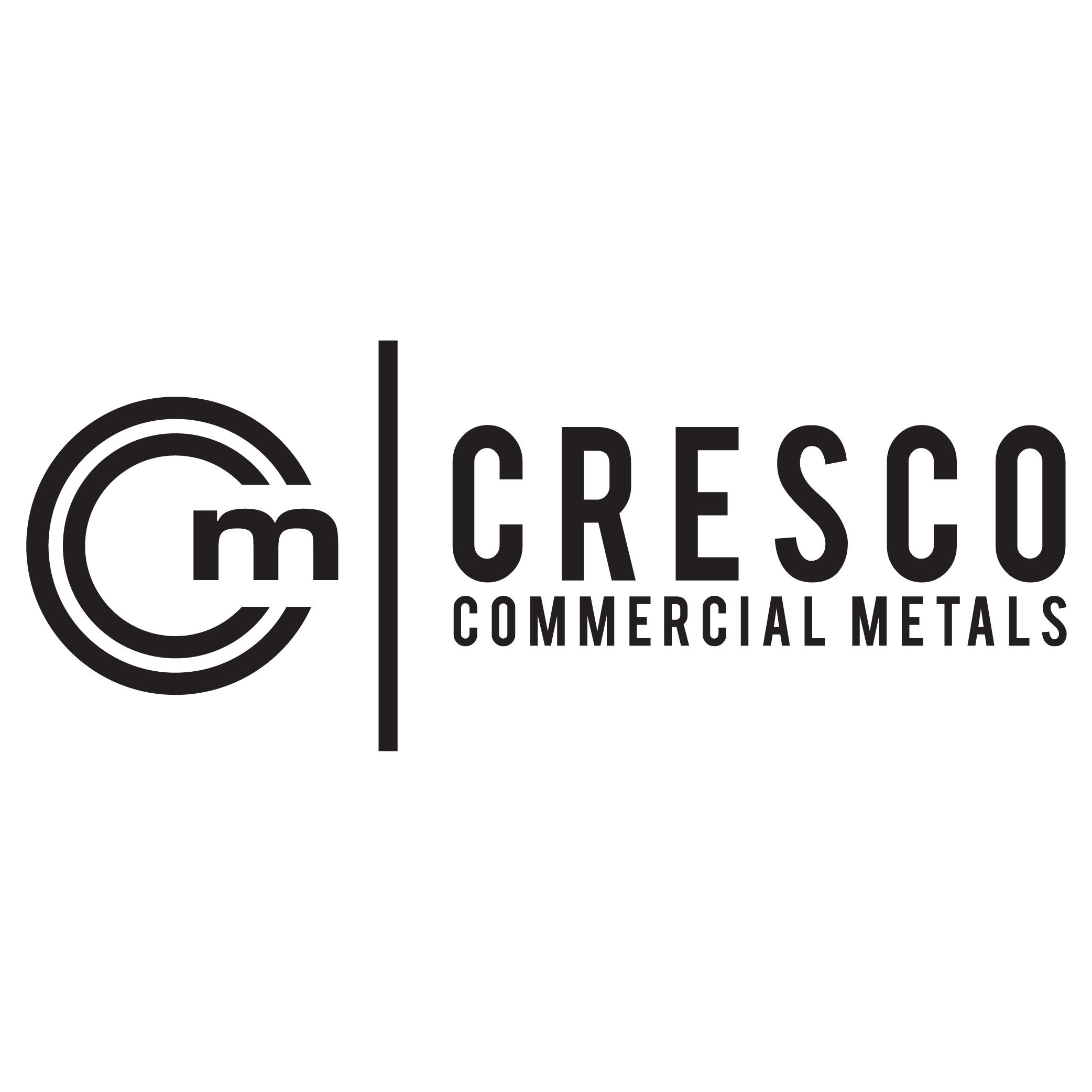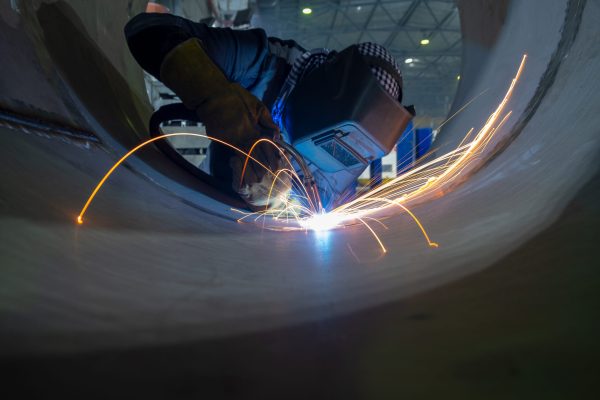In modern manufacturing, machining is essential for precisely shaping, cutting, and producing parts and components. The quality, speed, and cost of production can all be significantly impacted by the machining technique you use, regardless of whether you’re working with metals, polymers, or composites. To satisfy our customers’ wide range of demands, Cresco specializes in several machining techniques appropriate for industrial metal manufacturing. The four primary forms of machining discussed in this blog are milling, shearing, fabricating, and laser cutting.

-
Milling: Precision and Versatility
One of the most popular machining techniques is milling. In milling, a workpiece is shaped into the required structure by removing material with a spinning cutting tool. The milling machine, which is usually a computer-controlled device, holds the workpiece motionless while the tool moves in many axes to generate complex forms.
Types of Milling:
- Face Milling: used to move the cutting tool perpendicular to the workpiece to produce flat surfaces.
- End Milling: involves making accurate slots, holes, and curves with a revolving cutter traveling along the workpiece’s interior.
- Vertical Milling: The spindle is perfect for deep cavities and plunge cuts because of its vertical orientation.
- Horizontal Milling: The spindle is ideal for cutting along longer workpieces because of its horizontal orientation.
Benefits of Milling:
- High Precision: Results from CNC (Computer Numerical Control) milling machines are incredibly accurate and consistent.
- Complex Shapes: Milling makes creating detailed shapes and complex geometry possible.
- Material Flexibility: Metals, polymers, wood, and other materials are all well-suited for this technique.
Common Applications:
Milling is commonly employed in sectors that require accuracy and minute details, such as electronics manufacturing, automotive, and aerospace. It is perfect for producing prototypes, engine parts, and gears.
-
Shearing: Clean, Straight Cuts
Large sheets of plastic, metal, or other materials can be sheared into smaller, straight-edged pieces. The workpiece is subjected to tremendous pressure by the shearing machine’s two blades, one stationary and one moving, which cleanly slices through it.
Types of Shearing:
- Straight Shearing: The most common type uses straight blades to cut long, straight sections.
- Punching: Involves using a punch to shear out sections of the material, creating holes or specific shapes.
- Blanking is similar to punching but used to remove entire sections, leaving behind “blanks” for further processing.
Benefits of Shearing:
- Speed: Shearing is fast and efficient, especially for cutting large sheets.
- No Material Loss: The process creates minimal waste, as the cut edge is clean and precise.
- Smooth Edges: Shearing provides smooth, straight cuts, reducing the need for secondary finishing.
Common Applications:
Shearing is frequently used in industrial metal manufacturing to produce blanks for forming or stamping operations. It’s also typical in sectors like construction and auto manufacture, where big metal sheets must be swiftly reduced to size.
-
Fabricating: Crafting Complex Parts
The more general process of putting together separate components to create a finished product is called fabrication. Numerous machining processes, including cutting, welding, forming, and bending, are usually used. Fabricating is more about assembling components into useful components than it is about performing individual cutting.

Types of Fabricating:
- Welding: Joining pieces of metal through heat or pressure.
- Bending: Using presses or hammers to bend metal into shape.
- Forming: Reshaping materials using mechanical force or heat.
- Cutting: Often involves shearing or laser cutting to shape materials before they are assembled.
Benefits of Fabricating:
- Customization: Custom metal fabrication allows for highly customized parts, combining different materials and techniques.
- Complete Solutions: Instead of focusing on a single process, fabrication delivers a complete, finished product.
- Versatility: Fabrication uses various materials, including metals, plastics, and composites.
Common Applications:
Numerous industries, including aerospace, automotive, shipbuilding, and construction, require fabrication. It’s beneficial for making unique metal components, machines, and structures that need several steps.
-
Laser Cutting: Precision with Speed
A powerful laser beam precisely cuts materials. To produce crisp, clean edges, the laser vaporizes, melts, or burns the material. Metal, wood, plastic, and glass are just a few of the materials that laser cutting can work with.
Types of Laser Cutting:
- CO2 Lasers: Best for cutting non-metal materials like wood, plastic, and textiles.
- Fiber Lasers: Known for cutting metals with high precision and efficiency.
- Crystal Lasers: Capable of cutting both metal and non-metal materials but are more expensive and used for specialized applications.
Benefits of Laser Cutting:
- Extreme Precision: Laser cutting can create intricate designs and fine details with minimal distortion.
- Minimal Waste: The narrow laser beam reduces material waste compared to traditional cutting methods.
- High Speed: Laser cutting can process materials quickly, making it ideal for high-volume production.
Common Applications:
Electronics, medical devices, automotive production, and aerospace industries frequently use laser cutting. It’s perfect for creating high-precision parts, engraving, and cutting intricate shapes.
FAQs
- What is the difference between milling and laser cutting? Whereas laser cutting uses a powerful laser beam, milling uses a revolving cutting tool to remove material. While laser cutting is perfect for precise cuts on various materials, including metals and non-metals, milling is usually utilized for thicker materials and pieces that need mechanical shaping.
- What materials can be processed using shearing? Shearing is frequently used to cut big metal sheets, but it can also be applied to composite sheets and polymers. The method works best for materials that require straight, crisp cuts with little waste.
- How does fabrication differ from other machining processes? Fabrication entails putting together different components to create a final product using various methods, including cutting, welding, and bending. Unlike single procedures like milling or shearing, fabrication focuses on producing whole, working systems or components.
- Is laser cutting better for high-precision parts? Yes, laser cutting is one of the greatest choices for high-precision items. It is perfect for aerospace, electronics, and medical device manufacturing sectors because it provides precision, little material waste, and the capacity to work with complex geometries.


